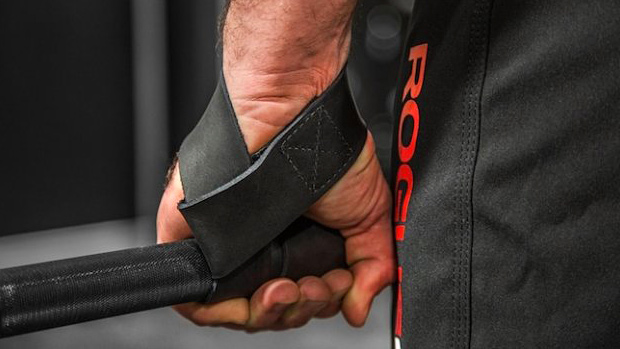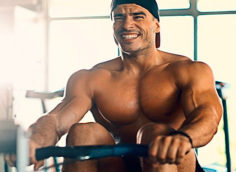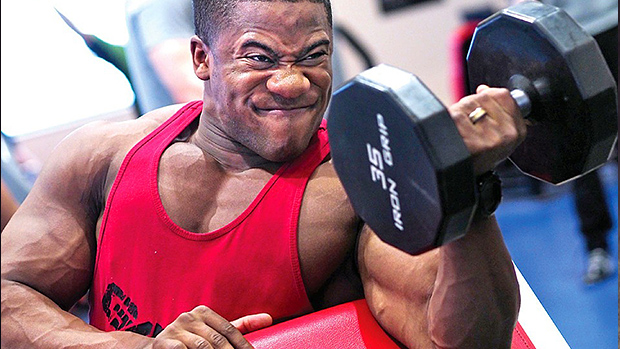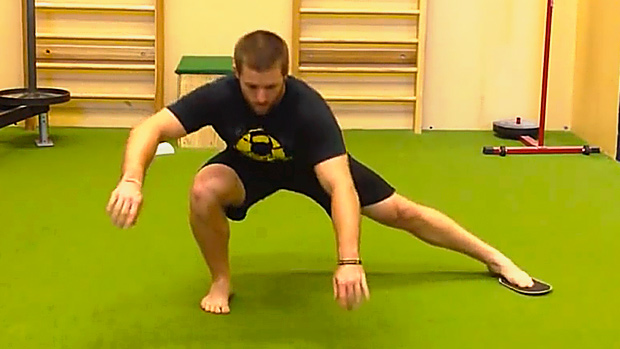With "functional" being the big trend in training, many lifting tools are now frowned upon. Don't squat or deadlift with a belt or your core will get non-functional! Don't use straps when lifting because it's cheating, your grip will become weak, and you won't have "real life strength" because of it!
Here's what's funny: Those who preach against straps and belts because they'll make you weak are rarely strong people themselves. The more opposed they are to these tools, the weaker they are.
Hey, I've got news for you: Most elite Olympic lifters wear straps in their training. Not all the time of course, but they do use them quite often. About 75% of them wear belts too. Strongman competitors often train with straps and almost always with a belt. Powerlifters too. They understand that these tools that can improve your training. They shouldn't become a crutch, but they're useful under many circumstances.
- Straps allow you to lift with relaxed arms, allowing you to shift the tension somewhere else. This is useful for a bodybuilder on rowing and pulling movements if he has dominant biceps that tend to take over.
- Straps make it possible to continue doing heavy lifting work even with busted hands. Busted hands and torn calluses are common among CrossFit athletes, strongmen, Olympic lifters, and powerlifters who use a high training frequency. Deadlifting, snatching, or pulling heavy with straps is better than not training heavy at all.
- Straps decrease the neurological stress of heavy deadlifts, snatches, and pulls. They can be a good idea during a deloading period where you want to let the CNS recover. They can also be used once in a while to be able to handle a greater volume of heavy work with less ill effect.
- Straps allow you to get extra reps and lift a bit more weight on big compound lifts – great for an occasional overload on the big muscle groups.
- For many lifts, feeling the heaviness of the bar in your hands will be a huge reason for missed lifts. This is especially true for the Olympic lift variations. If you always use straps in training, you lose the feeling of pulling a heavy bar, and when you have to lift without straps you'll suffer a severe drop in performance.
- Straps allow you to "yank" the bar from the floor more easily. That technique is not always possible (nor safe) with heavy weights without straps. When you have to stop using straps your technique might not fit the new situation. A good example is Pat Mendes, who always snatched with straps in training and always did 20-30kg less in competition. He was known for yanking the bar off the floor.
- If you always rely on straps it's true that your grip strength can become a weak link. While the occasional set with straps is fine, over-relying on them might be problematic if you compete in a sport where you can't use straps or you play a sport that requires a very strong grip.
Lifts Where You Can Use Straps
- Snatch and clean high/low pulls (floor, blocks, hang)
- Snatch and power snatch from the hang or blocks
- Shrugs
- Rows and pulls
Lifts Where You Can Use Straps Occasionally
- Deadlifts (all variations and heights)
- Snatch or power snatch from floor
Lifts Where You Should Stay Away From Straps
- Clean and power clean
- Farmer's walks
- Thick bar work
If you're a bodybuilder and grip strength doesn't matter to you, you can use straps pretty much anytime, although you still benefit from doing strapless work to build your forearms. If you're a strength athlete, do assistance work for grip strength and grip endurance on top of your regular lifting.
T Nation earns from qualifying purchases as an Amazon Associate. Read more about our policy.





